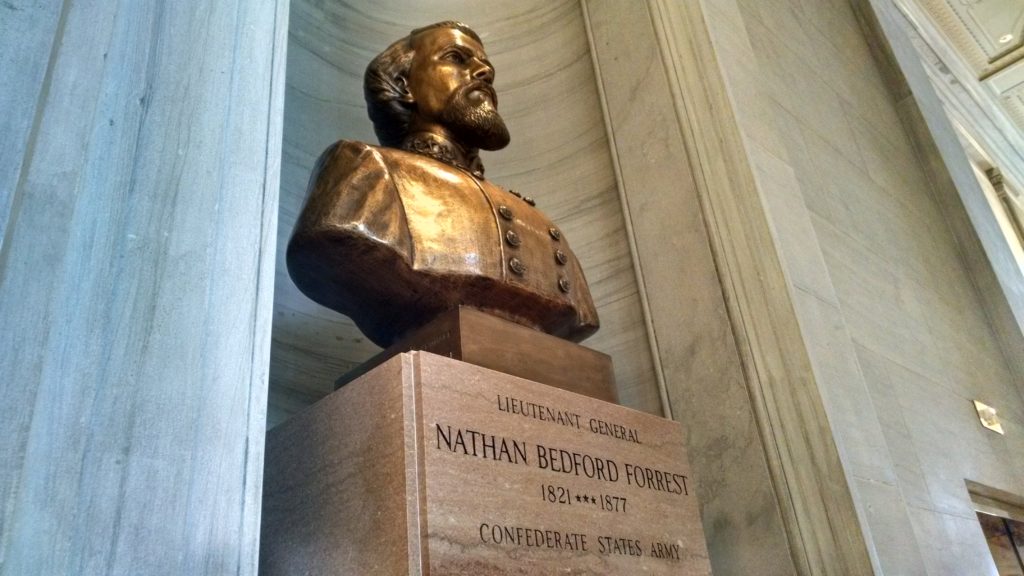
The Tennessee Historical Commission will hold a second and final hearing on the fate of the bust of Nathan Bedford Forrest at the state capitol, which could lead to its eventual removal.
The Forrest bust is one of three that state officials are asking to move. The others depict U.S. Admiral David Farragut, a famed commander in the Union Navy during the Civil War, and U.S. Admiral Albert Gleaves, who served more than 40 decades. All three would go into an exhibit at the Tennessee State Museum honoring “military heroes.”
More: Read the State Capitol Commission’s application to move the busts.
Commissioners are scheduled to cast their votes on Tuesday in a meeting that will be streamed online. But regardless of their decision the process is far from over.
According to the state’s Heritage Protection Act, the commission has 30 days to post their final ruling online. Groups unhappy with the ruling have two months from then to file a petition for a review in court.
Even if a court does not intervene, officials must wait four months after the ruling is posted before action can be taken. That could not happen until late July or August at the earliest.
Forrest was a Confederate general and early leader of the Ku Klux Klan. His bust was approved by the legislature in 1973, in the wake of the Civil Rights Movement and Martin Luther King Jr.’s assassination.
Tennessee is one of several Southern states, along with Alabama, Georgia, Mississippi, North Carolina and South Carolina, that have passed preservation laws that make it challenging for monuments to be removed or relocated. The laws can make the process arduous and lengthy.
The process in Tennessee was made even harder after Memphis circumvented the law in 2017 by selling a park named after Forrest and a set of Confederate monuments to a private group, which removed them in the middle of the night. Those monuments have since been given to the Sons of Confederate Veterans.
In total, Tennessee is home to more than 100 Confederate symbols according the the Southern Poverty Law Center, including about 47 monuments, more than 40 highways or roads, and several parks.

